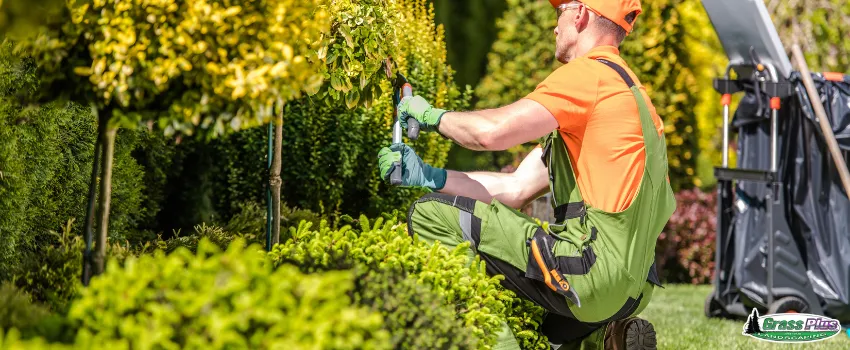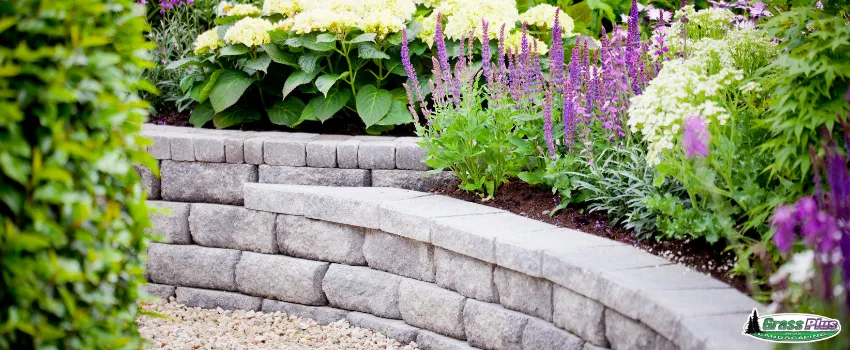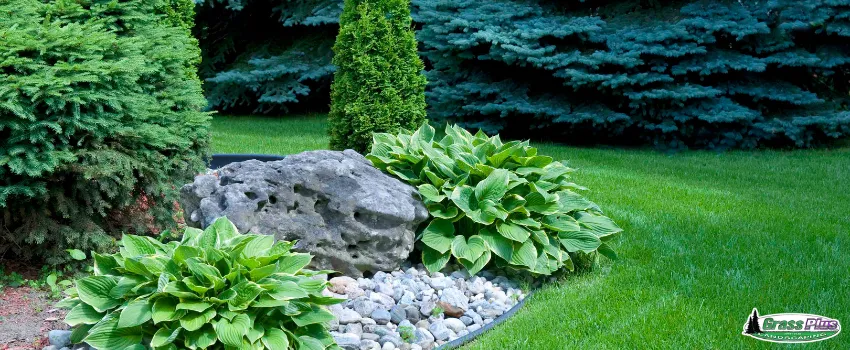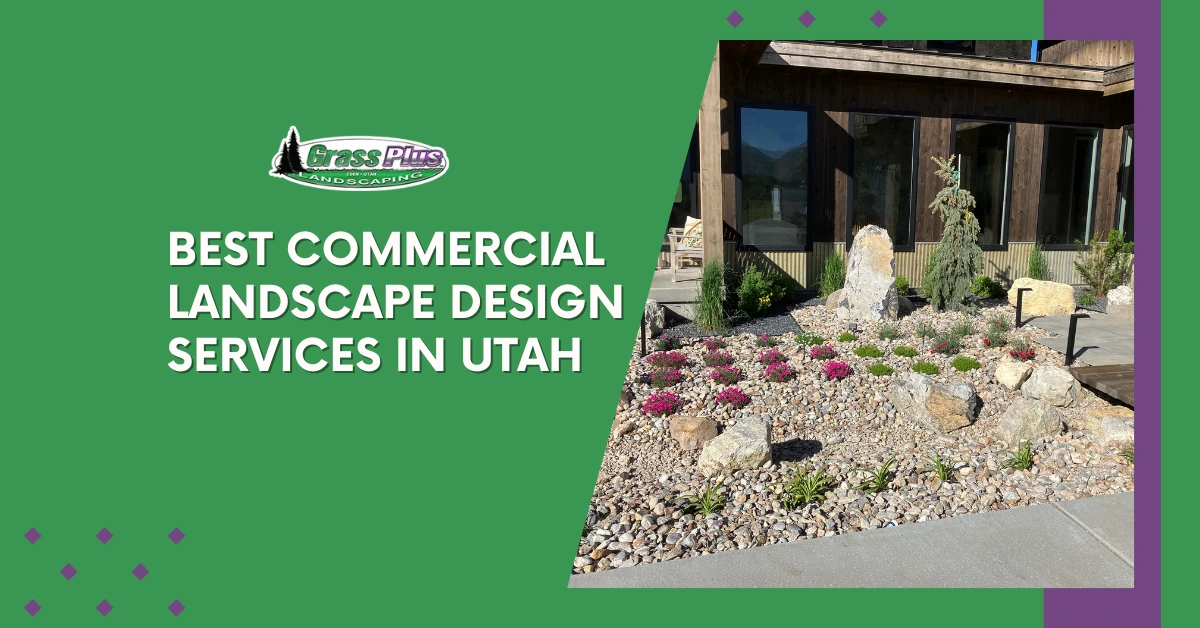Creating a sustainable landscape design involves the perfect combination of beauty and practicality. It’s where you can enjoy a stunning outdoor space while minimizing the time spent on its upkeep. But how do we achieve this landscaping utopia? The key is to make smart choices and embrace low-maintenance strategies that will keep your landscape looking its best with minimal intervention.
Embarking on a journey towards sustainable landscape design is like opening a door to a world of possibilities. You can create an outdoor paradise that captures the eyes and cares for the environment. But before diving into the details of this approach, let’s first lay down the groundwork and explore the core concepts of sustainable landscaping.
What is the aim of sustainable landscape design?
Sustainable landscape design aims to create outdoor spaces that harmonize with the environment, enhance the well-being of people, and endure the test of time. It seeks to strike a balance between the natural and built elements, ensuring the efficient use of resources and minimizing negative impacts on the ecosystem. In a nutshell, sustainable landscape design is all about taking care of nature while creating beautiful and functional outdoor areas.
How does climate change affect landscaping?
The goal of sustainable landscape design is to reduce the overall carbon footprint of the property while creating a functional and aesthetically pleasing outdoor space. Sustainable landscaping, therefore, mitigates the impacts of climate change.
Here’s how climate change can impact landscaping:
1. Altered growing conditions
Climate change can lead to shifts in temperature and rainfall patterns, which can significantly impact plant growth. It may result in changes in the timing of plant development, altered pest and disease dynamics, and increased water management challenges.
2. Increased frequency of extreme weather events
Extreme weather events, such as hurricanes, droughts, and heat waves, are expected to become more frequent and intense due to climate change. These events can cause significant damage to landscapes, including flooding, erosion, and destruction of plants and hardscape elements. Landscapes not correctly designed and prepared to withstand these events may suffer more severe damage.
3. Higher water demand
Climate change can also increase evaporation rates and higher temperatures, resulting in greater plant water demand. This can pose challenges for landscaping, as maintaining lush and healthy vegetation may require more irrigation. However, with smart landscape design, it is possible to minimize water usage and still achieve sustainable landscaping.
4. Invasive species and plant range shifts
Climate change can create new opportunities for invasive plant species to establish themselves in different regions. These invasives can outcompete native plants and disrupt the ecological balance of landscapes. Moreover, climate change can also cause shifts in the ranges of various plants, potentially rendering some species unsuitable for their current locations.
5. Need for adaptation and resilience
Given the uncertainties and challenges posed by climate change, a sustainable landscape design will require a focus on adaptation and resilience. This means selecting a smart landscape design with plants that can withstand various climatic conditions. It also involves implementing strategies to mitigate the risks of extreme weather events and being prepared to adjust as the climate changes.
How can we achieve sustainability in landscaping?
Achieving a sustainable and beautiful landscape design requires careful planning and the implementation of eco-friendly practices. It involves:
1. Designing with nature in mind
Creating a sustainable landscape starts with understanding the site’s unique characteristics and working with nature, not against it. This means considering factors such as soil type, drainage patterns, and existing vegetation to minimize the need for extensive modifications.
2. Using native plants
One of the most innovative choices for a sustainable landscape design is to use native plants. These flora naturally occur in a specific region and are well-adapted to the local environment. By opting for native plants, you can reduce the need for excessive watering, fertilization, and pest control.
3. Incorporating drought-tolerant plants
Drought-tolerant species have the superpower of surviving and thriving with minimal water requirements. By using them strategically, you can significantly reduce irrigation needs and conserve water, all while keeping your landscape green and gorgeous.
4. Efficiently managing water
Sustainable landscape design also means having an efficient water source. To achieve this, you can use various water-saving techniques, such as installing rain barrels to collect water for irrigation. To avoid overwatering, you can use drip irrigation systems for targeted watering and grouping plants with similar moisture needs.
5. Choosing the right materials
A sustainable and beautiful landscape design is not just about plants; it also considers the materials used in hardscaping features like paths, patios, and walls. Opting for locally sourced and recycled materials can reduce the carbon footprint of your landscape, as it minimizes the energy and resources needed for transportation and manufacturing.
6. Implementing proper waste management
Implementing proper waste management practices, such as composting yard trimmings and using them as natural fertilizers, is another vital aspect of a sustainable landscape design. This reduces the waste sent to landfills and provides a sustainable source of plant nutrients.
7. Conserving energy
A smart landscape design considers energy conservation, too. By strategically placing trees and shrubs to provide shade and wind protection, you can reduce the energy needed to cool your home in the summer and shield it from harsh winds during the winter.
8. Thinking long-term
Lastly, achieving a sustainable landscape design requires one to think long-term. It means selecting plants and materials that will stand the test of time, reducing the need for frequent replacements. It also involves planning for future growth and maintenance requirements, ensuring that the landscape remains beautiful and functional for years to come.
How do I select plants for a sustainable landscape design?
The primary considerations for selecting landscape plants are:
1. Climate compatibility
Plants should be suitable for your area’s climate to ensure their healthy growth. Consider factors such as temperature ranges, rainfall patterns, and the length of the growing season when choosing plants.
2. Sunlight requirements
Different plants have varying sunlight needs. Some thrive in full sun, while others prefer shade. Select plants that will receive the appropriate sunlight in their intended planting locations.
3. Soil conditions
Your site’s soil type and pH level are essential factors to consider in creating a sustainable and beautiful landscape design. Conduct a soil test to determine its characteristics and choose plants suited to those conditions.
4. Maintenance demands
Consider the amount of time and effort you can dedicate to plant maintenance. Some plants require regular pruning, fertilizing, or pest control, while others are more low-maintenance.
5. Purpose and aesthetic preferences
Define the purpose of the plants in your smart landscape design. Are you selecting them for privacy, adding color, or attracting wildlife? Consider your aesthetic preferences, such as plant sizes, shapes, and textures, to create the desired look and feel.
6. Cost and availability
Consider the plants’ cost and availability, especially when aiming for a sustainable landscape design. If you have a specific budget, choose plants that fit within that range. Also, consider the availability of the plants in your local area to ensure their easy procurement.
7. Resistance to pests and diseases
Plants with natural resistance to pests and diseases can reduce the need for chemical interventions and lower the environmental impact of the landscape. When selecting plants, it is beneficial to consider those with a proven track record of pest and disease resistance.
Why is it important to maintain healthy landscape plants?
Maintaining healthy landscape plants is crucial because:
1. They enhance the overall appearance of the landscape
Healthy plants are like the crown jewels of a beautiful landscape design, adding beauty and visual appeal. They create a lush and vibrant environment that can uplift the mood of those who experience it.
2. They provide environmental benefits
Plants play a vital role in the environment by producing oxygen, reducing carbon dioxide levels, and improving air quality. They also help in controlling soil erosion and mitigating the effects of extreme weather conditions.
3. They support biodiversity
A well-maintained and beautiful landscape design with a diverse range of plants can attract various wildlife, such as birds and butterflies. These plants serve as habitats and food sources, contributing to biodiversity conservation.
4. They add value to the property
Healthy plants can increase the value of a property. A well-cared-for landscape creates a positive first impression and can significantly enhance the curb appeal of a home or business.
5. They reduce the need for costly replacements
Regular plant maintenance, such as pruning and disease prevention, can extend the lifespan of the plants, reducing the need for costly replacements. This can save both time and money in the long run.
6. They reflect the care and effort put into the landscape
Well-maintained plants are a testament to the care and effort invested in your beautiful landscape design. They reflect the attention to detail and a green thumb, creating a sense of pride for the property owner.
What are the problems of improper landscape planning?
The problems of improper landscape planning are:
1. Wasted resources
Improper planning can result in the inefficient use of resources, such as water, time, and money. If plants are installed in the wrong location and require frequent replacement due to poor growing conditions, it can lead to water wastage and increased maintenance costs.
2. Increased maintenance
A poorly planned landscape may require more maintenance than necessary. This can include excessive pruning, irrigation adjustments, and the use of additional resources to address issues such as poor drainage or soil erosion.
3. Reduced longevity of landscape elements
Improper planning can also result in the premature deterioration of landscape elements. For example, planting too close to structures without considering their mature size can lead to costly damage as the trees grow and their roots impact the foundation or infrastructure.
4. Negative environmental impact
Landscape planning that fails to consider the natural environment can have negative environmental consequences. For instance, if invasive plant species are introduced into the landscape, they can outcompete native plants and disrupt the local ecosystem. Similarly, improper management of stormwater runoff can lead to water pollution and the loss of valuable resources.
5. Unsatisfactory aesthetic results
One of the critical goals of any smart landscape design is to create an appealing and harmonious outdoor space. Improper planning can result in unsatisfactory aesthetic outcomes, such as clashing colors, overcrowded plantings, or a lack of visual focal points. These design flaws can detract from the overall beauty of the landscape.
What are the key features of a low-maintenance landscape design?
A low-maintenance landscape is a well-planned design that significantly reduces the time, effort, and resources required for its upkeep. Therefore, it is the easiest landscape to maintain.
While the specific features may vary depending on the site and personal preferences, several key elements are commonly found in a successful low-maintenance landscape design:
1. Thoughtful plant selection
Choosing the right plants is crucial in low-maintenance landscapes. Opt for species well-suited to the local climate and soil conditions, as these will require minimal intervention to thrive. Additionally, selecting plants with natural resistance to pests and diseases can significantly reduce the need for chemical treatments and frequent monitoring.
2. Strategic grouping and mulching
Efficient use of resources is a key principle in low-maintenance landscape design. To achieve this, plants are strategically grouped according to their water and sun requirements. This practice minimizes water waste and optimizes irrigation efforts. Adding a layer of mulch around the plants also helps retain moisture in the soil, reducing the watering frequency.
3. Smart irrigation systems
Low-maintenance landscapes often incorporate smart irrigation systems, such as drip irrigation or moisture-sensing technology. These systems deliver water directly to the plant roots, reducing evaporation and ensuring efficient water use.
4. Hardscape elements
Incorporating hardscape elements, such as pathways, decks, and fences, can significantly reduce the maintenance requirements of a beautiful landscape design. These features add aesthetic value and create defined areas that minimize the need for regular mowing and trimming.
5. Automated lighting and other amenities
Low-maintenance landscape designs often feature automated lighting systems and other amenities like outdoor seating and cooking areas. These elements enhance the usability and enjoyment of the outdoor space while reducing the need for manual maintenance. Using energy-efficient lighting options can also align the design with sustainable practices.
6. Proper edging and weed control measures
Well-defined edging adds visual appeal and serves as a barrier, preventing grass and weeds from encroaching on the hardscape and other desired areas. Choosing effective weed control measures, such as landscape fabric or organic mulches, can significantly reduce the time spent on manual weeding.
7. Regular maintenance and monitoring
While low-maintenance landscapes are designed to minimize frequent maintenance, some care is still necessary to preserve their aesthetic appeal. Removing debris, inspecting hardscape elements for wear, and adjusting irrigation settings should be performed to ensure the longevity and functionality of your beautiful landscape design.
How do you create a low-maintenance landscape?
Creating a low-maintenance landscape design requires thoughtful planning and incorporating smart design choices. Here are the steps to achieve a beautiful yet low-maintenance outdoor space:
1. Set realistic maintenance goals
Begin by setting realistic maintenance goals based on the time and effort you’re willing to invest in caring for your smart landscape design. Clearly defining these goals will guide the design process and help you make informed choices about the features and elements in your outdoor space.
2. Consider the long-term growth of plants
When designing a low-maintenance landscape, it’s crucial to consider the long-term growth of the plants. Selecting plants that won’t outgrow their space and become a maintenance burden will help maintain the desired aesthetic with minimal effort.
3. Group plants based on their maintenance needs
Efficiently manage the maintenance requirements of your plants by grouping them according to their needs. This allows you to provide targeted care in specific areas, such as extra water for plants that prefer moist conditions, while avoiding over-maintenance for those that thrive in drier spots.
4. Select quality materials
In a low-maintenance landscape design, selecting quality materials for both the hardscape and softscape elements is vital. Investing in durable and long-lasting materials will save you from the hassle of frequent replacements and repairs.
5. Install an automated irrigation system
Save time and effort by installing an automated irrigation system in your low-maintenance and smart landscape design. These systems can be programmed to deliver the right amount of water at optimal times, ensuring efficient and precise irrigation while freeing you from the task of manual watering.
6. Regularly maintain hardscape features
While a low-maintenance landscape focuses on reducing the care needed for plants, it’s essential to remember that hardscape features, too, require some attention. Regularly maintain these elements by cleaning them and addressing any issues to ensure they stay in good condition and continue to enhance your overall beautiful landscape design.
7. Seek professional assistance
Don’t hesitate to seek professional assistance in designing and implementing your low-maintenance landscape. A skilled landscaper can provide valuable expertise in plant selection, hardscape design, and overall project management, ensuring that your vision for a beautiful and smart landscape design is successfully realized.
Key Takeaway
By incorporating sustainable landscape design practices, you can create an outdoor space that not only enhances the beauty of your property but also minimizes its impact on the environment. However, achieving a sustainable landscape requires more than just adding a few green features; it requires careful planning and a deep understanding of the natural elements at play.
Creating a sustainable landscape involves designing and maintaining a functional, attractive outdoor space while considering the environment’s well-being. It requires using resources efficiently to reduce waste, choosing plants and materials that work well in the local climate and soil conditions, and implementing eco-friendly maintenance practices.
When it comes to sustainable landscape design, low maintenance is a crucial consideration. A well-designed, low-maintenance landscape can save you time, energy, and money in the long run. It minimizes the need for frequent and intensive upkeep, allowing you to enjoy your outdoor space without the stress of constant maintenance.
Looking for professional and sustainable landscaping in Huntsville, Utah?
Grass Plus Inc. has got you covered! We specialize in sustainable, low-maintenance, and smart landscaping in Huntsville, Utah, aiming to enhance the beauty of your property while minimizing its environmental impact.
Contact us today to learn more about our services and how we can transform your outdoor space into a sustainable haven!








